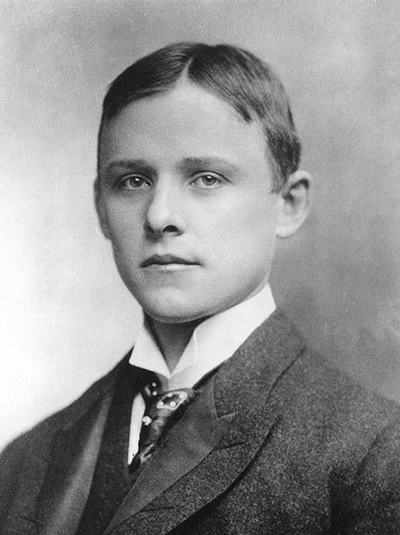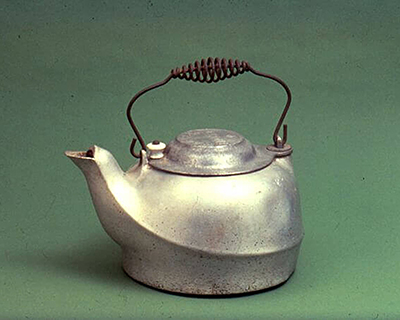ALUMINUM
There are several examples of differences that exist between American and British English. Americans do not spell color or favorite with the letter "u." Brits spell colonize and apologize with an "s" rather than a "z," and would add that the letter is actually zed. British pronunciation differs for words like garage, privacy, and controversy. While a lot of speculation exists that tries to explain the origins of these differences, much of it is shrouded in history and mystery. Some of it is timing, some of it is the isolation of an ocean, some of it is resentment of colonization, and some of it is just the natural evolution of language. But there's one word that we know definitively when and how it changed in America. And it was changed by a company.
In 1808, British chemist Humphry Davy suggested the existence of a new element based on his experiments with alum, a chemical compound that had been used as a dye for centuries. He never actually produced any of this mysterious substance, but he proposed the name "alumium" for it. Davy's contemporaries immediately criticized the name, suggesting that "aluminium" was more appropriate. In 1812, Davy published a chemistry textbook in which he apparently adopted the revised name, but he misspelled it as "aluminum." By the time element number 13 was actually isolated by Hans Christian Oersted in 1824, the chemistry world had agreed to call it aluminium, even in the United States.
When America was first colonized, English had no official standardization or documentation. The first comprehensive dictionary of the English language was created by Samuel Johnson in 1755. That dictionary was used as an authority in the fledgling United States until 1806, when Noah Webster published his first dictionary. Both works contained over 40,000 words, but Webster diverged from Johnson by changing the spelling of several words that have become standard in American English. Neither work contained aluminium since the word didn't yet exist. In 1828, after learning 26 languages, Webster released an expanded version of his dictionary that contained over 70,000 words. Almost 20% of the words had never appeared in another dictionary. One of those was the recently discovered element aluminum, apparently taken from Davy's 1812 textbook rather than the 1812 Quarterly Review which definitively named the element aluminium. Despite this entry, aluminium remained the most popular name in everyday speech and the official name of the element for the American Chemical Society. But that changed in 1895.

Aluminum is actually the most abundant metal on earth, but it's rarely found in its pure state. Most of it exists as aluminum oxide, also known as bauxite. After its discovery in 1824, it was classified as a precious metal due to its perceived rarity and difficulty to isolate. In 1886, Charles Martin Hall, a recent graduate from Oberlin College, successfully produced aluminum metal via electrolysis, and immediately realized its potential. He filed an application for his first patent four months later, and four more applications over the next two years. Every one of his patents referred to the metal as aluminium. On April 2, 1889, Charles Martin Hall was awarded five patents for his process.
With support from area investors, Hall founded the Pittsburgh Reduction Company and began production. But there wasn't yet a huge market for this new metal which was still considered precious and expensive. To demonstrate its benefits and qualities, the Pittsburgh Reduction Company manufactured its first piece of cookware, a no-rust teakettle, in 1895. To market the teakettle, Hall produced various sales materials, but made one little change to the name of the product. He chose to advertise it as aluminum, which simplified and shortened the name of the unfamiliar metal, and made it sound like platinum, which was widely recognized as a valuable metal and asset.

The name and product stuck. In 1890, aluminium was the more common term for the metal in all U.S. publications. By 1900, aluminum was twice as common as aluminium. Within the next ten years, aluminium all but disappeared from the American lexicon. In 1925, the American Chemical Society officially adopted aluminum. It is the only instance of a scientific body changing the name of an established element purely based on popular usage outside of science.
Aluminum was very quickly recognized as a durable, lightweight construction material. It was used to build ships and railroad cars, and eventually became the critical material that allowed aviation to develop. It soon replaced copper and iron for cookware because it was lighter, cooled more quickly, and would never rust. By the mid-twentieth century, aluminum had become the packaging material of choice, especially for foils and cans, replacing tin and steel. It's also the most recycled material in the United States. In 2022, almost 70% of all aluminum produced in the U.S. was recycled. Today, aluminum is a $230 billion industry. None of that would exist without the early marketing efforts of Charles Martin Hall. And while most of the world still refers to it as aluminium, Hall's preference for aluminum not only changed America; it changed the entire world.
SOURCES
- "Aluminum's Strange Journey From Precious Metal To Beer Can" from NPR
- "5 Big Reasons Why US and UK English Sound so Different" from Education First
- "Evolution of English: Difference Between American and British English" from International Center for Language Studies
- A Dictionary of the English Language by Samuel Johnson
- A Compendious Dictionary of the English Language by Noah Webster
- American Dictionary of the English Language by Noah Webster
- "Davy's Elements of Chemical Philosophy" from The Quarterly Review
- "Patience, Patent Pay off for Young Chemist" from Oberlin College
- "Charles M. Hall's Persistent Quest of Patents for Refining Aluminum Metal by Electrolysis" from American Chemical Society
- "Our History: A Legacy of Innovation" from Alcoa
- The Disappearing Spoon: And Other True Tales of Madness, Love, and the History of the World from the Periodic Table of the Elements by Sam Kean
- "Aluminum vs. Aluminium" from Spectra Aluminum Products
- "Aluminium: The Material That Changed The World" from The Institution for Science Advancement
- "Aluminum Statistics and Information" from United States Geological Survey
- "Aluminum Market Size, Share & Industry Analysis" from Fortune Business Insights
- All images are public domain













